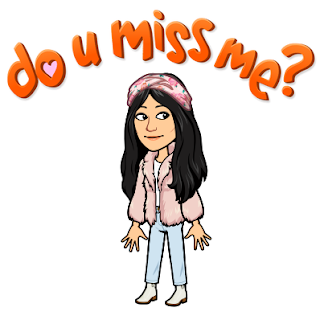Korean Art and Entertainment ( KPOP & KDRAMA) - part1
Hello my pretty Inkers,
For today's post i am going to talk about Korean art and entertainment.
The way we see now, the Korean Entertainment is very refreshing and interesting.
Almost everything or i guess everything from korean traditional arts to music to Korean Pop or Dramas you will find in wiki or many other sites out there.
But i thought because we will be talking about it i want to gather few of the interesting points for which the link will be provided for detils too, also i would like to mention my experience with it.
Let's first go with Korean Traditional Arts.
Dance
Dance in Korea began with shamanistic early rituals five thousand years ago and now ranges from folk dance to newly created and adopted contemporary dance.
In Korea, there is a distinction between court dance and folk dance. Common court dances are jeongjaemu (정재무) performed at banquets, and ilmu (일무), performed at Korean Confucian rituals. Jeongjaemu is divided into native dances (향악정재, hyangak jeongjae) and forms imported from Central Asia and China (당악정재, dangak jeongjae). Ilmu are divided into civil dance (문무, munmu) and military dance (무무, mumu). Many mask dramas and mask dances are performed in many regional areas of Korea. The traditional clothing is the genja, it is a special kind of dress that women wear on festivals. It is pink with multiple symbols around the neck area.
There is also one form of martial art dance which is named Taekkyeon.
Korean Painting
The earliest paintings found on the Korean peninsula are petroglyphs of prehistoric times. With the arrival of Buddhism from India via China, different techniques were introduced.
These techniques quickly established themselves as the mainstream techniques, but indigenous techniques still survived. Among them were the Goguryeo tomb murals. These murals inside many of the tombs are an invaluable insight into the ceremonies, warfare, architecture, and daily life of ancient Goguryeo people. Balhae kingdom, an successor state of Goguryeo, absorbed much of traditional Goguryeo elements.
Korean Craft
Reference - Wiki
 |
| Korean Dragon Jar |
The way we see now, the Korean Entertainment is very refreshing and interesting.
Almost everything or i guess everything from korean traditional arts to music to Korean Pop or Dramas you will find in wiki or many other sites out there.
But i thought because we will be talking about it i want to gather few of the interesting points for which the link will be provided for detils too, also i would like to mention my experience with it.
Let's first go with Korean Traditional Arts.
Dance
 |
KCS MMU Malacca: Korean dance |
 |
| Korean Shamanism |
In Korea, there is a distinction between court dance and folk dance. Common court dances are jeongjaemu (정재무) performed at banquets, and ilmu (일무), performed at Korean Confucian rituals. Jeongjaemu is divided into native dances (향악정재, hyangak jeongjae) and forms imported from Central Asia and China (당악정재, dangak jeongjae). Ilmu are divided into civil dance (문무, munmu) and military dance (무무, mumu). Many mask dramas and mask dances are performed in many regional areas of Korea. The traditional clothing is the genja, it is a special kind of dress that women wear on festivals. It is pink with multiple symbols around the neck area.
There is also one form of martial art dance which is named Taekkyeon.
Korean Painting
 | |
|
 |
| Afrasiab mural paintings (western wall, Korean delegation) |
These techniques quickly established themselves as the mainstream techniques, but indigenous techniques still survived. Among them were the Goguryeo tomb murals. These murals inside many of the tombs are an invaluable insight into the ceremonies, warfare, architecture, and daily life of ancient Goguryeo people. Balhae kingdom, an successor state of Goguryeo, absorbed much of traditional Goguryeo elements.
Korean Craft
 |
| (Clockwise from left top) Celadon Melon-shaped Bottle (Goryeo, 12th century) |
There is a unique set of handicrafts produced in Korea. Most of the handicrafts are created for a particular everyday use, often giving priority to the practical use rather than aesthetics. Traditionally, metal, wood, fabric, lacquerware, and earthenware were the main materials used, but later glass, leather or paper have sporadically been used.
Ancient handicrafts, such as red and black pottery, share similarities with pottery of Chinese cultures along the Yellow River. The relics found of the Bronze Age, however, are distinctive and more elaborate.
There is a genre distinction between folk music and court music. Korean folk music is varied and complex in different ways, but all forms of folk music maintain a set of rhythms (called 장단; Jangdan) and a loosely defined set of melodic modes. Korean folk musics are Pansori (판소리) performed by one singer and one drummer. Occasionally, there might be dancers and narraters. They have been designated an intangible cultural property in UNESCO's Memory of the world,and Pungmul (풍물) performed by drumming, dancing and singing. Samul Nori is a type of Korean traditional music based on Pungmul, and Sanjo (산조) that is played without a pause in faster tempos. Nongak (농악) means "farmers' music".
well these were just some links and descriptions from the web to get to know traditional Korean Art and Music,
what i have experienced that it is equally beautiful to watch either you watch it in a movie or a drama or in a festival in korea,
the traditional followings will fill you with a very reviving energy and exhilarating experience.
we will continue talking about Korean Pop culture and Entertainment in part two of this post. Stay tuned!!
please let me know your experience of how you embraced korean traditions and if you want to discuss about something. Also please let me know what do you think about the Blog.
please let me know your experience of how you embraced korean traditions and if you want to discuss about something. Also please let me know what do you think about the Blog.
Reference - Wiki
Thank you,
The Inker,
inkedtoday







Comments
Post a Comment